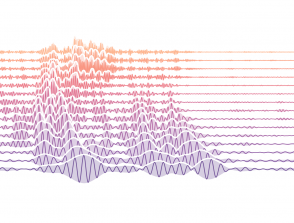Observations and modeling of the seismic rupture development based on the analysis of source time functions
Start: 27 September 2016
End: 16 January 2020
Supervisors :
Martin Vallee
Related teams :
Seismology, Sismologie
Status: Defended
Our knowledge of earthquake source physics, giving rise to events of very different magnitudes, requires observations of a large population of earthquakes. The development of systematic analysis tools for the global seismicity meets these expectations, and allows us to extract the generic properties of earthquakes, which can then be integrated into models of the rupture process. Following this approach, the SCARDEC method is able to retrieve source time func tions of events on a large range of magnitude (Mw > 5.7). The source time function (which describes the temporal evolution of the moment rate) is suitable for the analysis of transient rupture properties which provide insights into the generation of earthquakes of various sizes. The purpose of our study is to observe the rupture development of such earthquakes in order to add better constraints on kinematic and dynamic source models. The first part of our work focuses on the development of earthquakes through the analysis of the SCARDEC catalog. The phase leading to the peak of the source time function (“development phase”) is extracted to characterize its evolution. From the computation of moment accelerations at prescribed mo ment rates, we observe that the evolution of the moment rate during the developement phase is independent of the final magnitude. A quantitative analysis of the moment rate increase as a function of time further indicates that this phase does not respect the steady t 2 self-similar growth, suggesting a transient variation of rupture velocity and/or stress drop. In a second part, these observations are compared with kinematic source models. A crack model with ra dial variations of the rupture velocity combined with low stress drop highlights that correlation between rupture velocity and slip velocity is a key feature for the transient behavior of the development phase previously observed. We then generate, using the composite fractal RIK model, synthetic catalogs of source time functions. This also supports that the correlation bet ween rupture velocity and slip velocity, as well as the duration of the rise-time, have a strong effect on moment acceleration values. We finally develop heterogeneous dynamic models which take into consideration rupture physics. Heterogeneous distributions of the friction parameter Dc and the initial stress τ0 contribute to generate highly realistic rupture scenarios. Rupture propagation is strongly influenced by these two dynamic parameters which induce a clear pre ferential direction of propagation together with a local variability of the rupture velocity. The correlation between rupture velocity and slip velocity highlighted by the previous kinematic models is retrieved and allows to reproduce the SCARDEC observations. These findings are expected to put further constraints on future realistic dynamic rupture scenarios.





